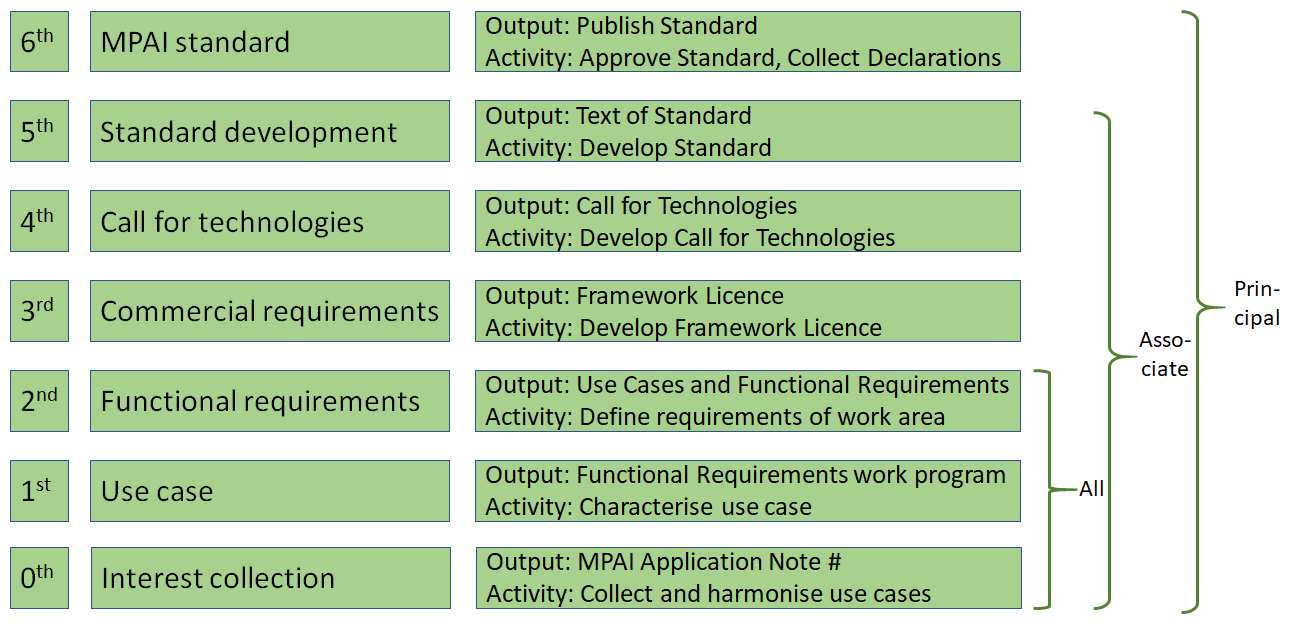Communication standards, at least so far, are handled in an odd way. They are meant to serve the needs of millions, if not billions of people, still the decisions about what the standards should do are left in the hands of people who, no matter how many, are not billions, not millions, not even thousands.
This is the end point of the unilateral approach adopted by inventors starting, one can say, from Gutenberg’s moving characters and continuing with Niépce-Daguerre’s photography, Morse’s telegraph, Bell-Meucci’s telephone, Marconi’s radio and tens more.
In retrospect, those were “easy” times because each invention satisfied a basic need. Today, the situation is quite different: basic needs are more than satisfied (at least for a significant part of human beings) while the “other needs” can hardly be addressed by the mentioned unilateral approach at technology use. This is even more true today when we are dealing with a technology – Artificial Intelligence – that will likely be the most pervasive technology ever seen.
This is the reason why MPAI – Moving Pictures and Audio Coding for Artificial Intelligence – likes to call itself, as the domain extension says, a “community”. Indeed, MPAI opens its doors to those who have for a need or wish to propose the development of a new standard. As “MPAI doors” are virtual because all MPAI activities are done online, access to MPAI is all the more immediate.
This MPAI openness should not be taken as a mere “suggestion box”, because MPAI does more than just asking for ideas.
To understand how MPAI is “a community”, I need to explain the MPAI process to develop standards, depicted in Figure 1

Figure 1 – The MPAI standard development stages
Let’s start from the bottom of the process. Members as well as non-members submit proposals. These are collected and harmonised, some proposals get merged with other similar proposals. Some get split because the harmonisation process so demands. The goal is to identify proposals of standard that reflect proponent’s wishes while making sense in terms of specification and use across different environments. Non-members can fully participate in this process on par with other members. The result of this process is the definition of one homogeneous areas of work called “Use Case”, but it is possible that or possibly more than one Use Case is identified. Each Use Case is described in an Application Note. An example of Application Note is
The 1st stage of the process entails a full characterisation of the Use Case and the description of the work program that will produce the Functional Requirements.
The 2nd stage is the actual development of the Functional Requirements of the area of work represented by the Use Case.
The “MPAI openness” is represented by the fact that anybody may participate in the three stages of Interest Collection, Use Case and Functional Requirements. With an exception, though, when a Member makes a proposal that s/he wishes to be exposed to members only.
The next stage is Commercial Requirements. A standard is like any other supply contract. You describe what you supply with its characteristics (Functional Requirements) and at what conditions (Commercial Requirements).
It should be noted that, from this stage on, non-members are not allowed to participate (but they can become members at any time), because their role of proposing and describing what a standard should do is over. Antitrust laws do not permits that sellers (technology providers) and buyers (users of the standard) sit together and agree on values such as numbers, percentage or dates, but it permit sellers to indicate the conditions, but without values. Therefore, the embodiment of the Commercial Requirements, i.e. the Framework Licence, will refrain from adding such details.
Once both Requirements are available MPAI is in a position to draft the call for Technologies (stage 4), review the proposals and develop the standards (stage 5). This is where the role of Associate Members in MPAI ends. Only Principal Members may vote to approve the standard, hence trigger its publication. But A, Associate Member may become a Principal Member at any time.

